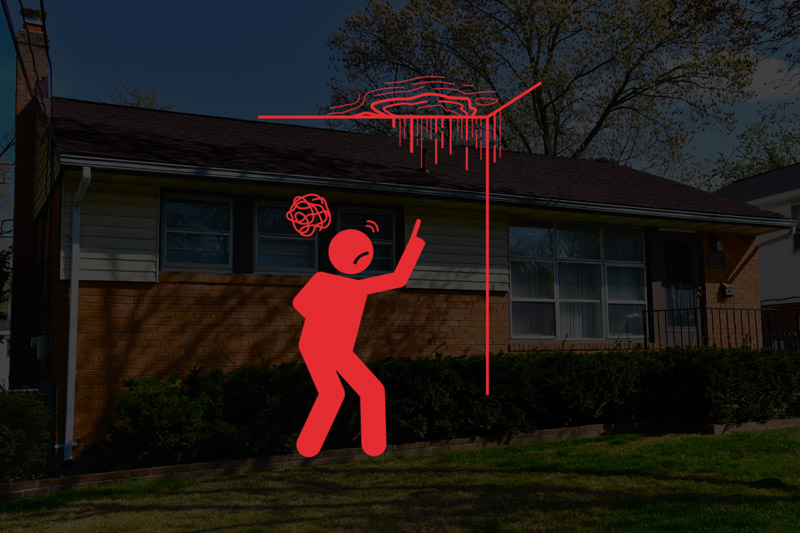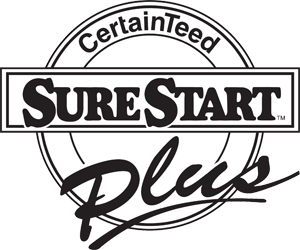Spring Roof Maintenance Tips for a Healthy and Long-lasting Roof
Regular maintenance is vital to ensure the longevity and optimal performance of your roof. By addressing roof issues in a timely manner, you can avoid more significant and costly repairs down the line. Spring, in particular, offers an ideal opportunity to assess and maintain your roof after the harsh winter months.During winter, your roof endures various challenges such as heavy snow, ice, and freezing temperatures. These conditions can cause damage to shingles, flashing, and other roof components. By conducting spring roof maintenance, you can identify and address these issues promptly.One of the key benefits of proactive maintenance is the prevention of leaks and water damage. By inspecting the roof in spring, you can detect potential areas of weakness or existing damage, such as cracked shingles or compromised flashing. Addressing these issues early on helps to maintain a watertight seal and prevents water from infiltrating your home.

Conducting Thorough Roof Inspection
A comprehensive roof inspection is a crucial step in spring roof maintenance. It allows you to identify potential issues early on and take appropriate measures to address them. Here is a step-by-step guide to help you conduct an effective roof inspection:
Start with a Visual Inspection: Begin by visually examining your roof from the ground. Look for any visible signs of damage, such as missing or cracked shingles, sagging areas, or debris accumulation. Use binoculars if needed to get a closer look.
Check for Loose or Damaged Shingles: Climb up a ladder and carefully inspect the shingles. Look for signs of curling, blistering, or cracking. Pay attention to any loose or missing shingles that need immediate attention. Inspect the flashing around chimneys, vents, and skylights for signs of damage or deterioration.
Examine Roof Penetrations: Inspect areas where pipes, vents, and other objects penetrate the roof surface. Ensure that the flashing around these penetrations is intact and properly sealed to prevent leaks.
Assess Gutters and Downspouts: Clean out the gutters and downspouts to remove any debris that could cause clogging. Check for signs of damage, such as rust or loose connections. Proper water drainage is essential for the health of your roof.
Look for Signs of Leaks: Inside your home, check for water stains or discoloration on the ceilings or walls, as they can indicate roof leaks. Trace the source of the leaks to identify the specific areas of concern on the roof.
Document and Address Issues: Take notes and photographs of any damage or issues you find during the inspection. This documentation will be helpful when discussing repairs with a professional roofer or contractor.

Cleaning and Clearing the Roof
Maintaining a clean and debris-free roof is essential for the longevity and performance of your spring roof. Here are the key aspects to consider when cleaning and clearing your roof:
Importance of Debris Removal: Removing debris from your roof is crucial for multiple reasons. Leaves, branches, and other debris can accumulate on the roof surface and in the gutters, leading to water pooling, clogged gutters, and potential water damage. Debris can also trap moisture and cause mold or mildew growth, compromising the structural integrity of your roof.
Proper Methods for Cleaning the Roof Surface: When cleaning the roof surface, it’s important to use safe and effective methods. Start by removing larger debris manually, using a roof rake or a broom. Be careful not to damage the shingles or other roofing materials in the process. Once the larger debris is cleared, use a low-pressure hose or a leaf blower to remove smaller particles and dirt. Avoid using high-pressure water as it can damage the shingles.
Importance of Cleaning Gutters, Downspouts, and Drainage Systems: Clearing gutters, downspouts, and drainage systems is equally important. Clogged gutters can cause water to overflow and seep into the roof, leading to leaks and water damage. Regularly inspect and clean the gutters, removing any leaves, twigs, or debris. Ensure that downspouts are properly connected and direct water away from the foundation of your home.

Repairing Damaged Shingles and Flashing
After the winter season, it’s essential to address common issues with shingles and flashing to maintain the integrity of your spring roof. Here’s a closer look at these concerns and tips for their repair:
Exploring Common Shingle and Flashing Issues: The winter months can cause damage to shingles and flashing due to heavy snow, ice, and freezing temperatures. Common shingle issues include cracking, curling, or missing shingles, which can compromise the roof’s protection against the elements. Flashing, the metal material used to seal joints and prevent water penetration, may also experience damage or deterioration.
Detailing the Repair Process for Damaged or Missing Shingles: Repairing damaged or missing shingles is crucial to maintain a watertight roof. Start by identifying the affected areas and carefully remove any loose or damaged shingles. Ensure you have matching replacement shingles on hand. Use roofing cement or nails to secure the new shingles in place, following the manufacturer’s guidelines. It’s crucial to maintain proper alignment and ensure a tight seal to prevent water infiltration.
Providing Tips for Inspecting and Repairing Damaged Flashing: Damaged flashing around chimneys, vents, and skylights can result in water leaks and structural damage. Inspect the flashing carefully, looking for signs of rust, cracks, or gaps. If you notice any issues, remove the damaged flashing and clean the area thoroughly. Install new flashing using appropriate sealants and fasteners, ensuring a secure and waterproof connection.

Maintaining Roof Integrity and Preventing Leaks
Maintaining the integrity of your spring roof is crucial to prevent leaks and ensure its long-term performance. Here are some important tips to help you address minor cracks and gaps in the roof surface and enhance its protection:
The Significance of Maintaining Roof Integrity to Prevent Leaks: A well-maintained roof with intact surfaces and strong structural integrity is your first line of defense against leaks. By regularly inspecting your roof and addressing any issues promptly, you can prevent water infiltration and potential water damage to your home’s interior. Maintaining roof integrity is essential for the longevity and effectiveness of your spring roof.
Tips for Addressing Minor Cracks and Gaps in the Roof Surface: During your roof inspection, pay close attention to any visible cracks or gaps in the roof surface. These can be potential entry points for water. Using a roofing sealant or appropriate patching material, carefully fill in minor cracks and gaps. Ensure the surface is clean and dry before applying the sealant, following the manufacturer’s instructions. This simple step can help prevent water penetration and extend the lifespan of your roof.
Exploring the Benefits of Applying Sealants and Roof Coatings for Added Protection: Applying sealants and roof coatings can provide an additional layer of protection to your spring roof. These products act as a barrier against moisture, UV rays, and other environmental factors. They help to enhance the durability and longevity of your roof, reducing the risk of leaks and minimizing the need for extensive repairs in the future. Consult with a roofing professional to determine the most suitable sealant or coating for your specific roof type.

Enhancing Energy Efficiency and Insulation
Enhancing energy efficiency and insulation in your spring roof can have multiple benefits, including reduced energy costs and improved roof longevity. Here are some key points to consider when focusing on energy efficiency:
The Role of Proper Insulation in Energy Efficiency and Roof Longevity: Proper insulation plays a crucial role in maintaining energy efficiency and extending the lifespan of your spring roof. It helps regulate indoor temperature, preventing heat loss during colder months and heat gain during warmer seasons. Adequate insulation also reduces the strain on your HVAC system, leading to energy savings and increased comfort for your home.
The Importance of Checking Attic Insulation and Ventilation: Start by inspecting your attic’s insulation and ventilation. Inadequate insulation or ventilation can lead to energy loss and moisture buildup, which can contribute to roof damage and decreased energy efficiency. Ensure that insulation is evenly distributed, covering the entire attic floor and any exposed areas, such as around vents or pipes. Additionally, check for proper attic ventilation to prevent condensation and maintain a balanced temperature.
Tips for Improving Insulation and Reducing Energy Loss through the Roof: To enhance insulation and reduce energy loss through your spring roof, consider the following tips:
- Add insulation: If your attic lacks sufficient insulation, consider adding more. Use insulation materials appropriate for your region and consult insulation R-value guidelines to determine the recommended thickness.
- Seal air leaks: Inspect for air leaks around vents, chimneys, and other roof penetrations. Seal any gaps or cracks using weatherstripping, caulk, or foam sealants to prevent air leakage and maintain energy efficiency.
- Consider reflective coatings: Reflective roof coatings, such as cool roof coatings, can help reduce heat absorption and lower energy consumption. These coatings have reflective properties that reflect sunlight, keeping the roof surface cooler and reducing the need for excessive cooling.
View More Articles
Please Share!











